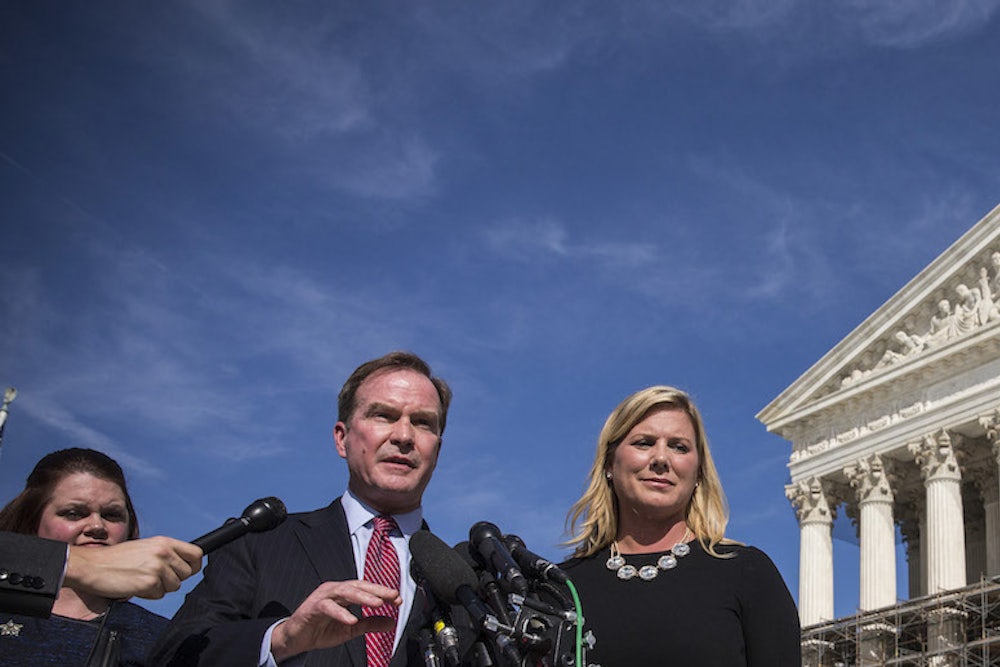The Supreme Court upheld a Michigan ban on the use of race in university admissions Tuesday, renewing fears among progressives that affirmative action policies may not be long for this country.
In the decision, for a case called Schuette v. Coalition to Defend Affirmative Action, the court did not make any philosophical statement about racial preferences. But it did empower affirmative action’s opponents to outlaw it at the state level. As Justice Anthony Kennedy wrote in the controlling opinion, “This case is not about how the debate about racial preferences should be resolved … It is about who may resolve it.” The Michigan ban was established by voter initiative in 2006. In the wake of the court’s decision, voters in any other states can do the same with full confidence that the law is on their side.
I wrote to some of the leading experts on affirmative action and higher education law to get their takes on the ruling. Several suggested that its most immediate impact will be in the six other states that, like Michigan, have passed ballot initiatives banning affirmative action: Arizona, Florida, Nebraska, New Hampshire, Oklahoma and Washington. Any attempt to challenge those bans is now “futile,” Robert M. O’Neil of The University of Virginia School of Law wrote in an e-mail. The ruling could also inspire other states to hold ballot initiatives—or could spur out-of state activists to look for places propose them, said Michael A. Olivas of the University of Houston Law Center.
The opening for activists could stretch beyond racial preference in admissions. Barbara A. Lee, an attorney who teaches at Rutgers’ School of Management and Labor Relations, predicted the ruling would “encourage those who oppose any form of preference (possibly even those related to social class, income, geography, etc.) to organize a grassroots movement to eradicate by ballot initiative the policies that educators have developed to broaden the scope of educational opportunity for groups traditionally excluded from access to public higher education, either by law or by poverty.”
In principle, scholars said, Tuesday’s ruling does not contradict earlier rulings from the Supreme Court that affirmative action is constitutional. The most important of these is Grutter v. Bollinger, in which the Court held in 2003 that universities can use race in admissions to further their compelling interest in creating diverse student bodies. In 2013, the Court sent Fisher v. University of Texas, another challenge to affirmative action, back to the 5th Circuit Court of Appeals, which had originally upheld the Grutter precedent.
Still, experts said, both the Fisher case and today’s Michigan case are a reminder of the changing politics of race on the Supreme Court—and Chief Justice John Roberts’ view that “we’re in a post-racial world,” as Olivas described his thinking. The Fisher case “seems to be intended to send a message to lower courts to apply a truly demanding form of strict scrutiny,” Kermit Roosevelt, from the University of Pennsylvania Law School, wrote, “with the result that any explicit consideration of race is likely to be held unconstitutional. … Fisher probably points towards a future in which the federal Constitution will be interpreted to contain a prohibition very much like the one Michigan enacted.”
“[S]urely the Justice’s views on affirmative action loomed in the background of today’s decision,” wrote Tomiko Brown-Nagin of Harvard Law School. “[T]he bottom line is that the Roberts Court is nudging universities toward so-called race-neutral alternatives to race-conscious affirmative action, as it once again stated in Schuette. Grutter is imperiled, implicitly if not explicitly.”
